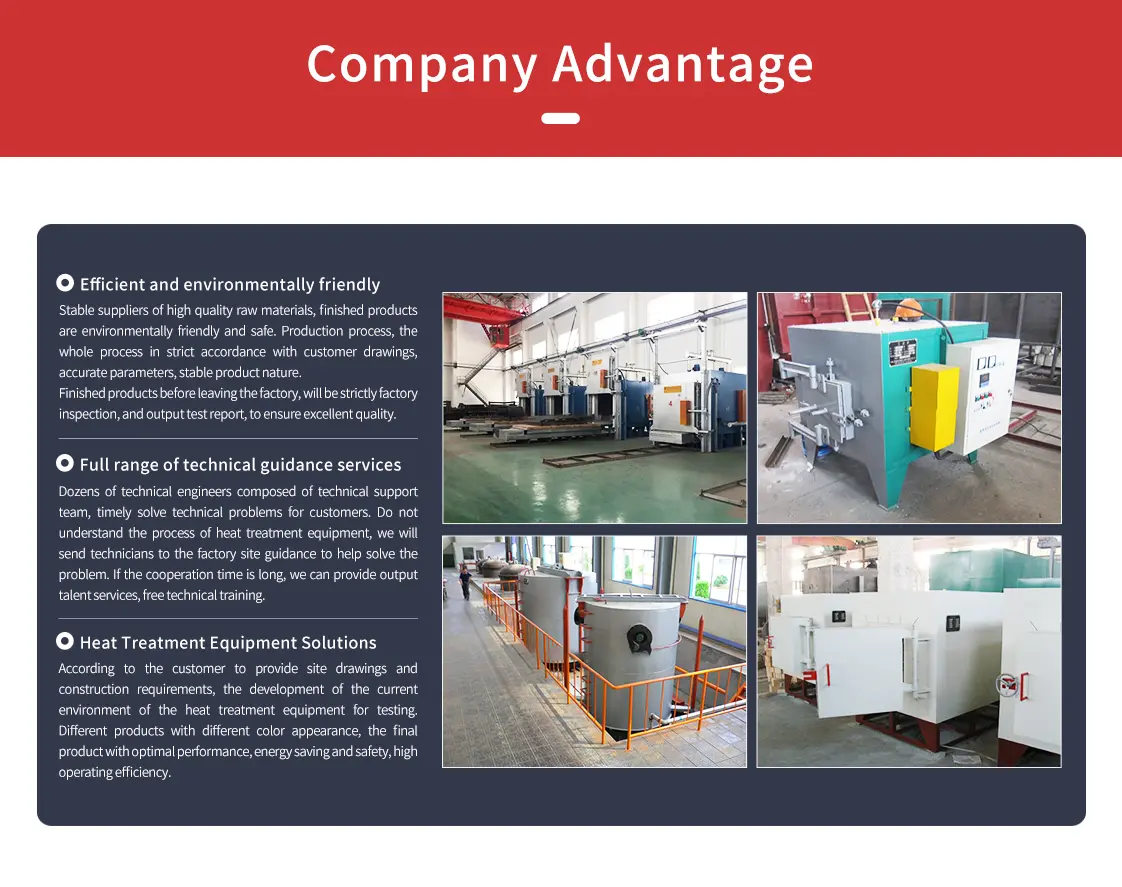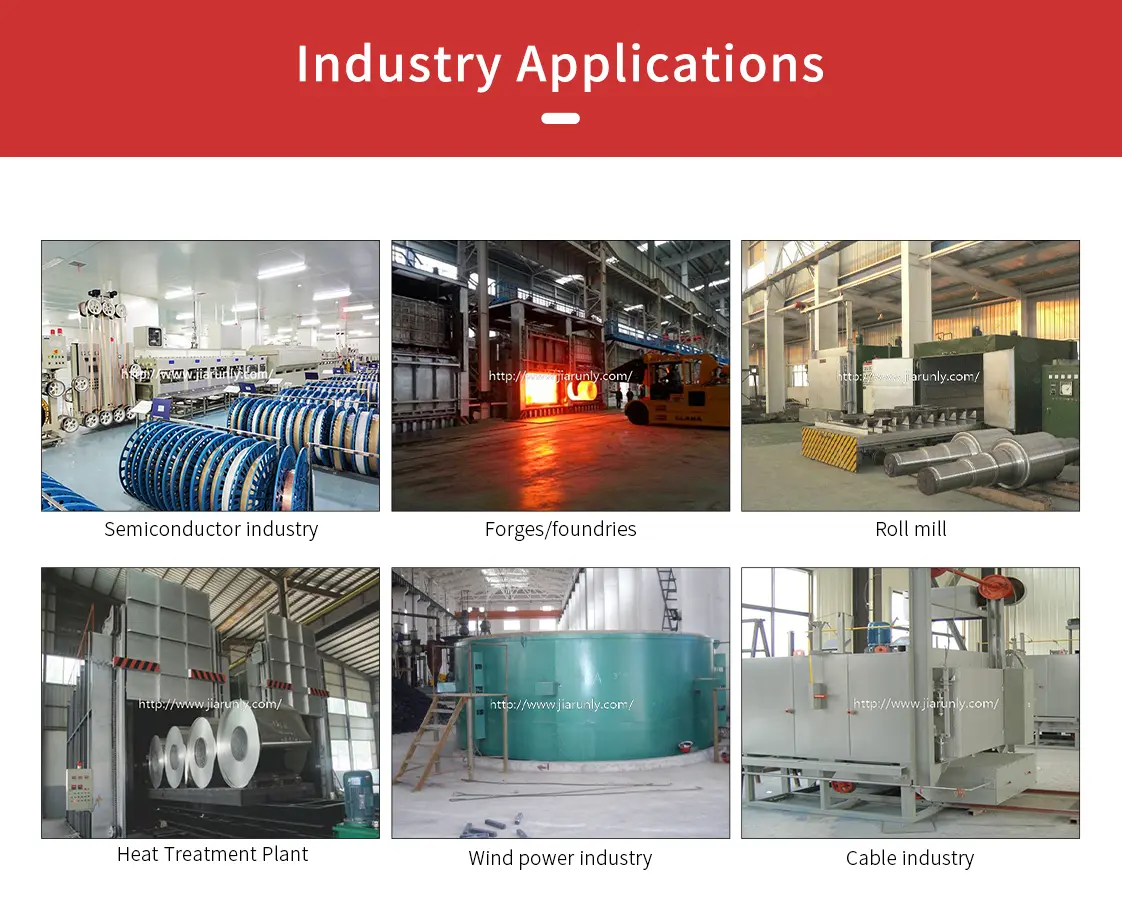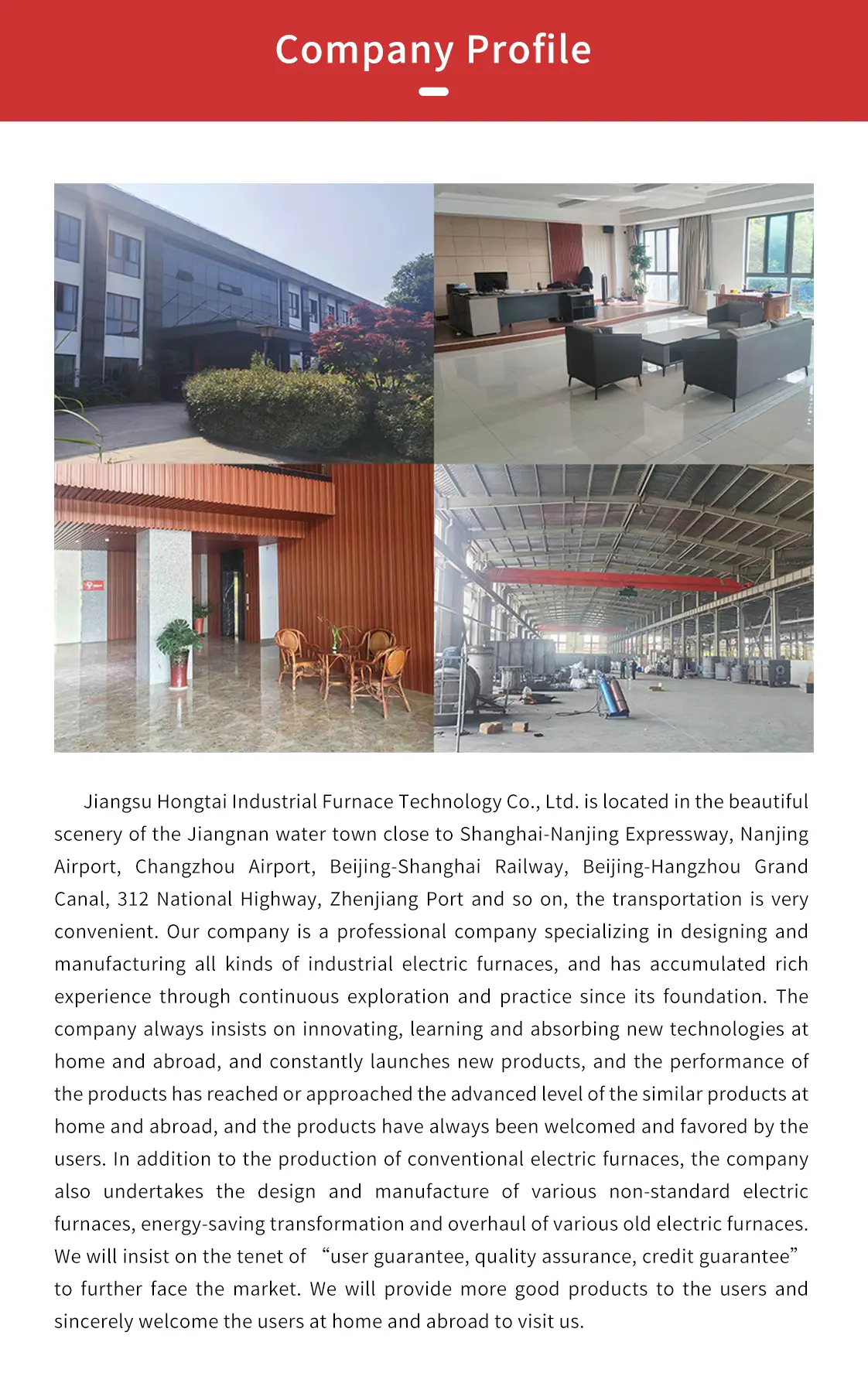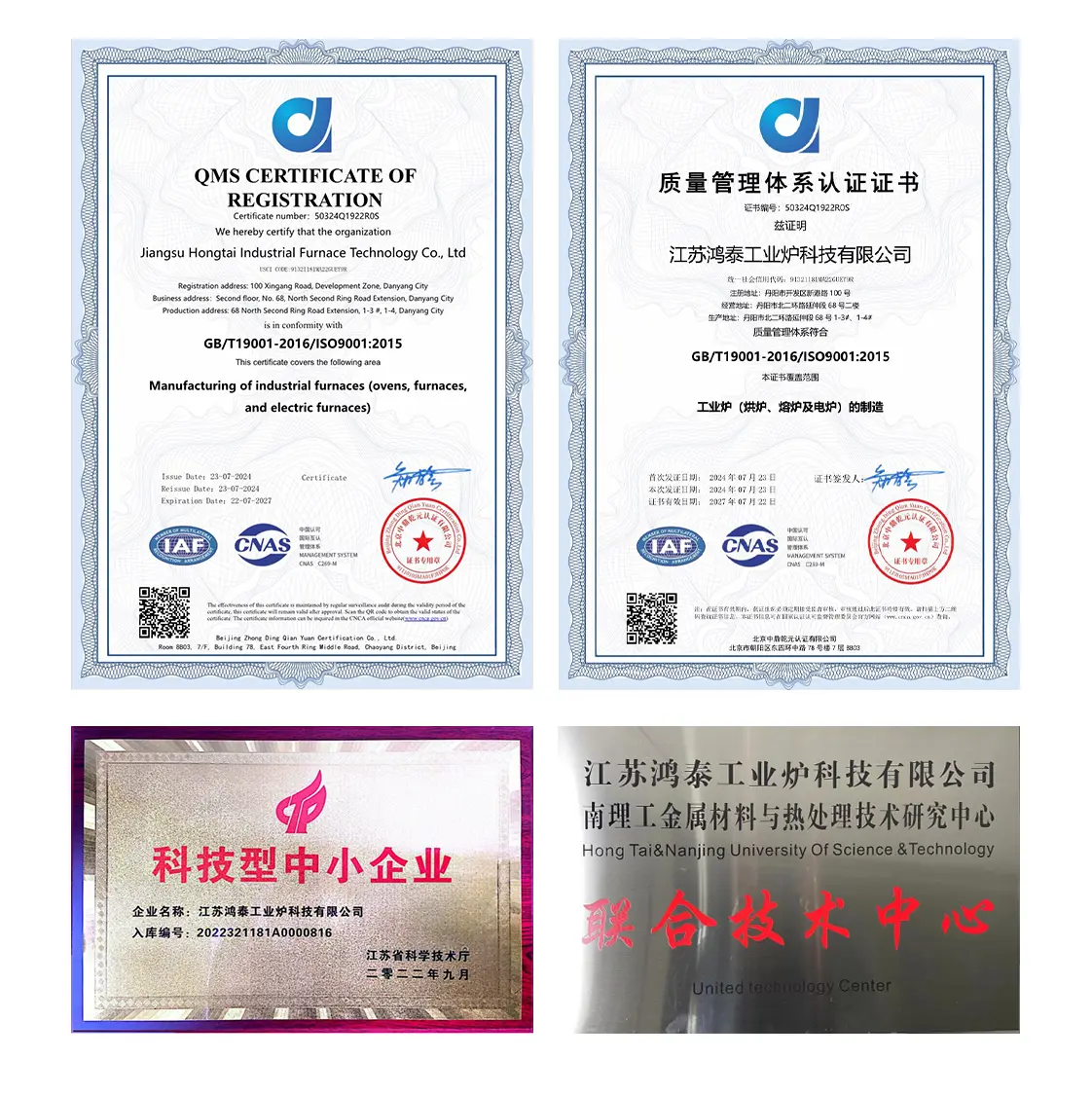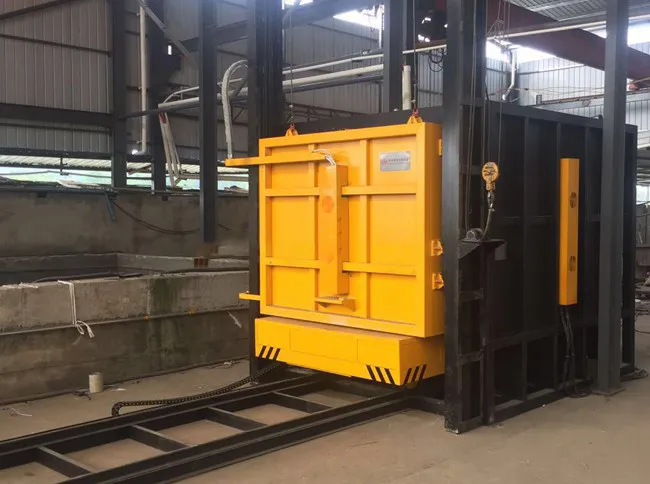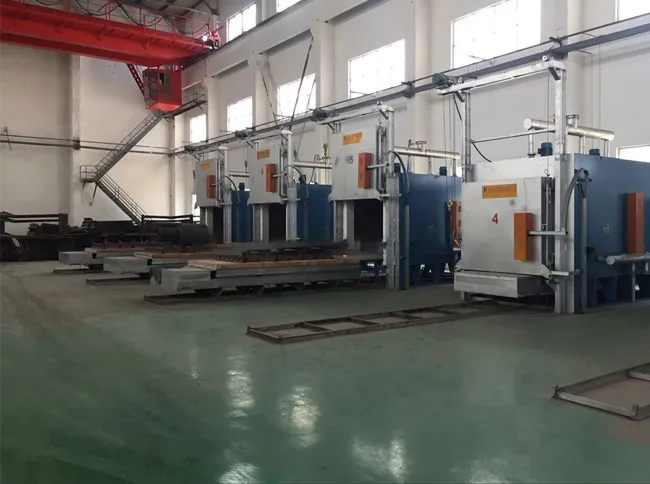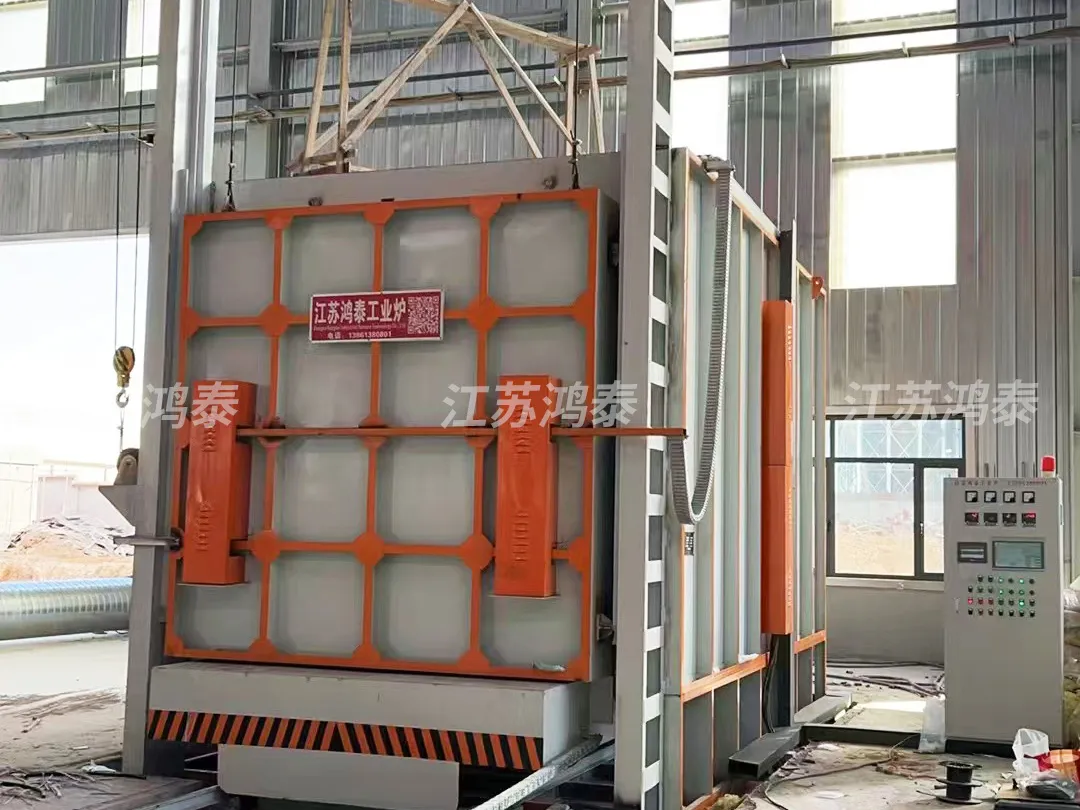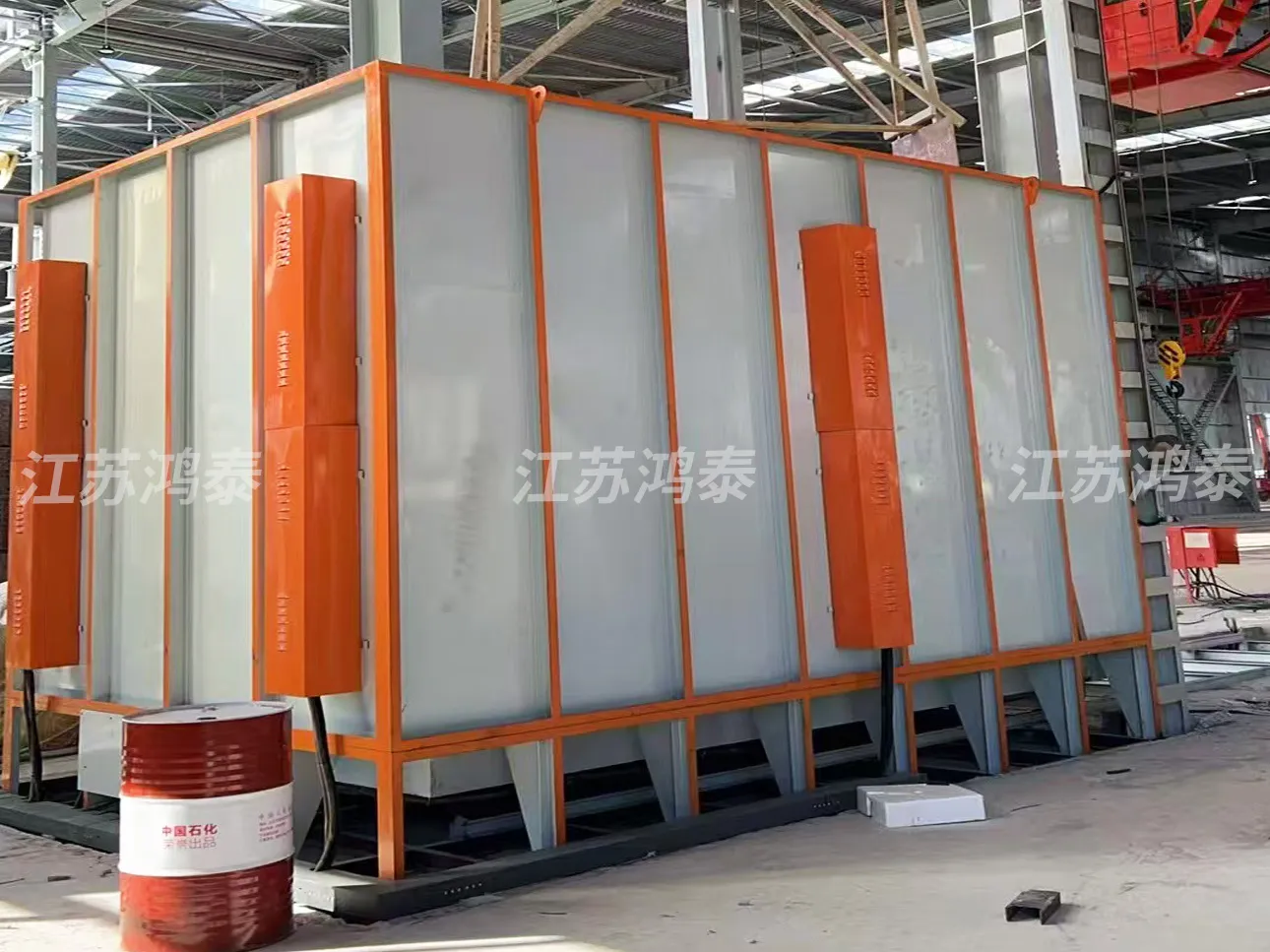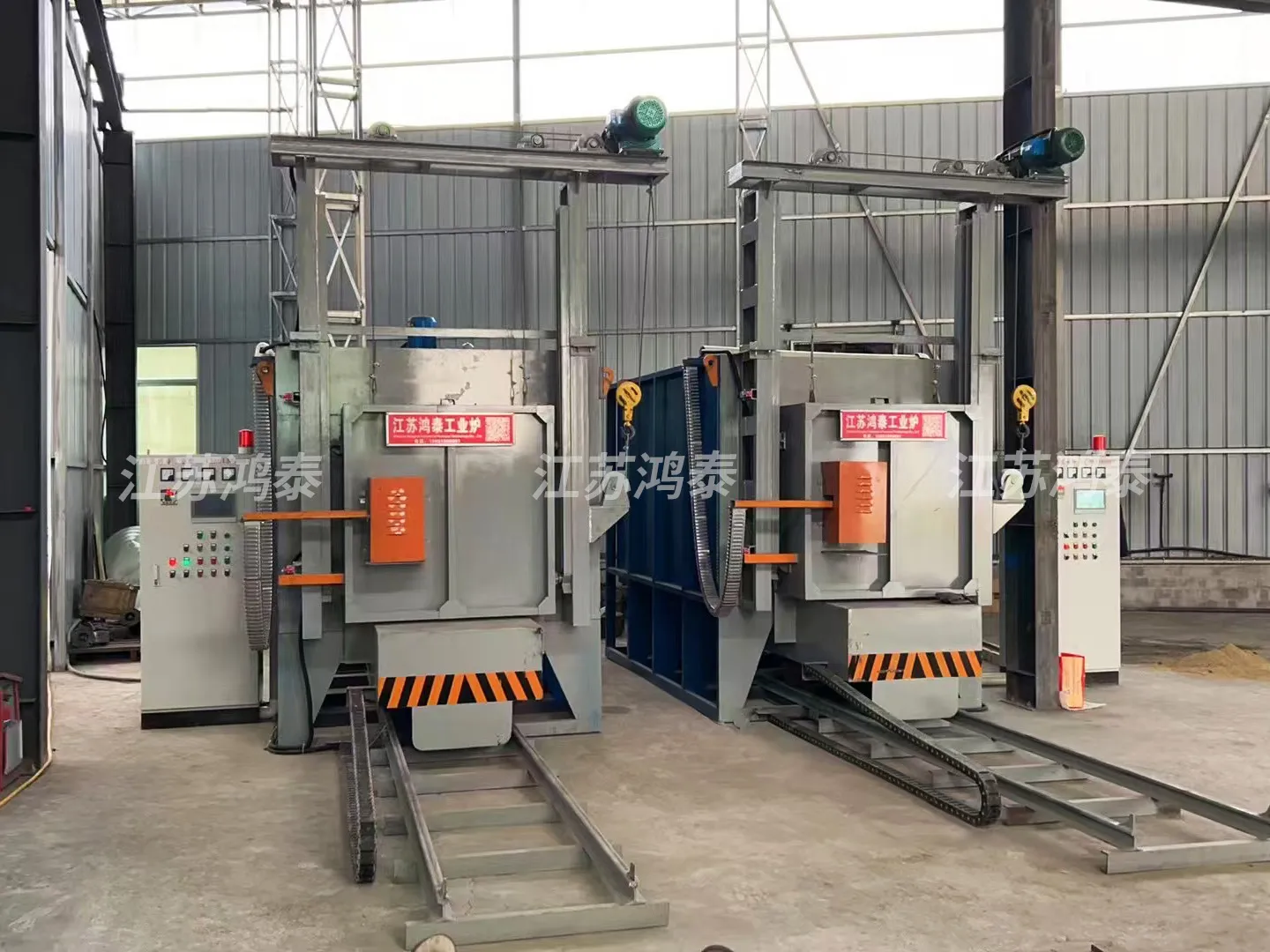- Vacuum furnace & oven
- Annealing Furnace & Oven
- Tempering furnace & oven
-
Carburizing furnace & Ovens
-
Bell Type Furnace
-
Pit Type Furnace & Well Type Furnace
-
Box Furnace & Chamber Furnace
-
Car Bottom Furnace & Bogie Hearth Furnace
-
Nitriding furnace & Ovens
-
Melting furnace & Ovens
- Quenching furnace & Ovens
-
Rapid quenching furnace & Ovens
- Forging furnace & Ovens
- Bright heat treatment furnace & Ovens
Bogie Annealing Furnace & Ovens
Heat treatment furnace manufacturer,Jiangsu Hongtai Industrial Furnace Technology Co., Ltd
Bogie-type annealing furnace is a standard energy-saving cyclic operation furnace, super energy-saving structure, using all-fiber furnace membrane structure, power saving 30%.
Bogie Annealing Furnace & Ovens
Heavy-Duty Annealing Solutions for Large and Heavy Components with Precision Control
Product Introduction
Our Bogie Annealing Furnaces & Ovens are robust and highly efficient industrial heat treatment systems specifically designed for the precise annealing of large, heavy, and irregularly shaped metal components. Annealing is a crucial heat treatment process that involves heating a material to a specific temperature, holding it there for a period, and then slowly cooling it. The primary goals of annealing are to soften the material, relieve internal stresses, improve ductility, refine grain structure, and enhance machinability or cold workability. The bogie (or car-bottom) hearth design allows for easy loading and unloading of substantial and heavy workpieces by rolling the hearth out of the furnace. This design, often combined with forced air circulation or controlled atmospheres, ensures excellent temperature uniformity throughout the workload, which is critical for achieving consistent and predictable material properties. These furnaces are ideal for a wide range of applications in industries such as heavy machinery, forging, casting, and large component manufacturing, where specific material properties are required before further processing.
Core Advantages for Heavy-Duty Annealing
- Ideal for Large & Heavy Components: Bogie hearth design facilitates easy loading and unloading of substantial and heavy workpieces, improving operational efficiency.
- Material Softening: Effectively reduces hardness and increases ductility, making large materials easier to form, machine, or cold work.
- Stress Relieving: Relieves internal stresses induced during manufacturing processes like casting, forging, or welding, preventing cracking and distortion in large components.
- Grain Structure Refinement: Promotes the formation of a more uniform and finer grain structure, enhancing mechanical properties and surface finish for heavy parts.
- Excellent Temperature Uniformity: Equipped with forced air circulation or controlled atmospheres, guaranteeing uniform heat distribution throughout the large load, critical for consistent results.
- Energy Efficient: Optimized insulation and heating elements minimize energy consumption, reducing operational costs for large-scale annealing.
- Automated & Safe Operation: Integrated PLC control with comprehensive safety interlocks, real-time monitoring, and data logging for reliable and secure operation for heavy loads.
Technical Specifications
| Parameter | Unit | Range/Value | Notes |
|---|---|---|---|
| Maximum Working Temperature | °C | Up to 1100 | Depending on material and annealing type |
| Heating Method | - | Electric, Gas-fired | Selectable based on energy source availability |
| Atmosphere Control | - | Air, Inert Gas (N2, Ar), Hydrogen, Vacuum | For bright annealing or to prevent oxidation/decarburization |
| Rated Power/Fuel Consumption | KW / m³/h | Varies | Efficient heating systems for large volumes |
| Working Chamber (W×H×L) | mm | Customizable, Large Dimensions | Designed for large and heavy components |
| Temperature Uniformity | °C | ±5 (typical) | Ensures consistent annealing results for large loads |
| Control Accuracy | °C | ±1 | Advanced PID control |
| Cooling Method | - | Slow Furnace Cooling, Air Cooling | Controlled cooling rates for desired properties |
| Control System | - | PLC + Touchscreen HMI | Advanced automation and data logging |
| Safety Features | - | Over-temperature protection, Atmosphere monitoring, Emergency shutdown | Ensures safe operation |
Working Principle
Bogie annealing furnaces, also known as car-bottom furnaces, are designed for the heat treatment of large, heavy, or bulky components that are difficult to load into conventional furnaces. The defining feature is a movable hearth (bogie) that can be rolled out of the furnace chamber, allowing for easy loading and unloading of workpieces using overhead cranes or other lifting equipment. Annealing is a heat treatment process that involves heating a material to a specific temperature, holding it there for a period, and then slowly cooling it. The primary goals are to increase ductility, reduce hardness, relieve internal stresses, improve machinability, and refine the grain structure.
The process begins with loading components onto the bogie outside the furnace. Once loaded, the bogie is rolled into the furnace chamber, and the furnace door is sealed. Heating elements (electric or gas-fired) then raise the temperature of the chamber and its contents to the desired annealing temperature, which can vary significantly depending on the material and the specific type of annealing (e.g., full annealing, process annealing, spheroidizing annealing). To ensure excellent temperature uniformity, which is crucial for consistent annealing results, these furnaces are typically equipped with powerful forced air circulation fans or operate under controlled atmospheres. These systems ensure that all parts of the large load receive uniform heat treatment.
During the soaking period, atomic diffusion occurs, allowing the material's microstructure to transform. After soaking, the material is cooled slowly, often within the furnace itself, to allow for further microstructural changes and to prevent the reintroduction of stresses. The controlled cooling rate is critical for achieving the desired final properties. The entire process is precisely controlled by advanced PLC systems, ensuring repeatable and high-quality results for various industrial applications involving large components.
Process Flow
Loading onto Bogie
Large components are loaded onto the movable bogie hearth outside the furnace chamber.
Heating to Annealing Temperature
Bogie moves into the furnace, and components are heated uniformly to the precise annealing temperature.
Soaking Period
Components are held at the annealing temperature for a specified duration to allow microstructural transformation and stress relief.
Controlled Slow Cooling & Unloading
Components are slowly cooled (often within the furnace) to achieve desired properties, then unloaded from the bogie.
Solving Customer Pain Points
Efficient Handling of Large & Heavy Components
The bogie design allows for easy and safe loading/unloading of substantial and heavy workpieces, significantly improving operational efficiency for large-scale annealing.
Achieving Desired Material Softness & Ductility
Our annealing furnaces precisely control heating and cooling cycles to achieve optimal material softness and ductility, making subsequent forming or machining operations easier and more efficient for large parts.
Eliminating Internal Stresses & Preventing Cracking
Effective stress relief prevents distortion, cracking, and premature failure of large components caused by residual stresses from prior manufacturing processes.
Ensuring Uniform Properties Across Large Loads
Excellent temperature uniformity, often achieved through forced air circulation, ensures consistent annealing results throughout the entire batch, even for large or densely packed components.
Improving Machinability & Cold Workability for Heavy Parts
By refining grain structure and reducing hardness, our furnaces enhance the machinability and cold workability of heavy materials, leading to reduced tool wear and improved production efficiency.
Preventing Oxidation & Decarburization with Controlled Atmospheres
Optional controlled atmosphere capabilities protect sensitive large materials from surface degradation during high-temperature annealing, preserving material integrity and finish.
Customer Success Stories
A major heavy machinery manufacturer significantly improved the machinability of their large forged components, reducing machining time by 25% and extending tool life, after integrating our bogie annealing furnace into their production line.
Customized Services
We offer comprehensive customization services for our bogie annealing furnaces, including tailored chamber dimensions, specific heating methods (electric or gas), and integration with various controlled atmosphere systems (N2, Ar, H2, Vacuum). Our engineering team works closely with clients to design solutions that precisely meet their unique component sizes, weight capacities, desired material properties, and production throughput requirements, ensuring optimal performance and seamless integration into their heat treatment processes.
Related Keywords
bogie annealing furnace, heavy-duty annealing oven, large component annealing, industrial bogie furnace, controlled cooling, heat treatment annealing, material softening, stress relieving, precision heat treatment, metallurgical equipment, large forging annealing, casting annealing, batch annealing
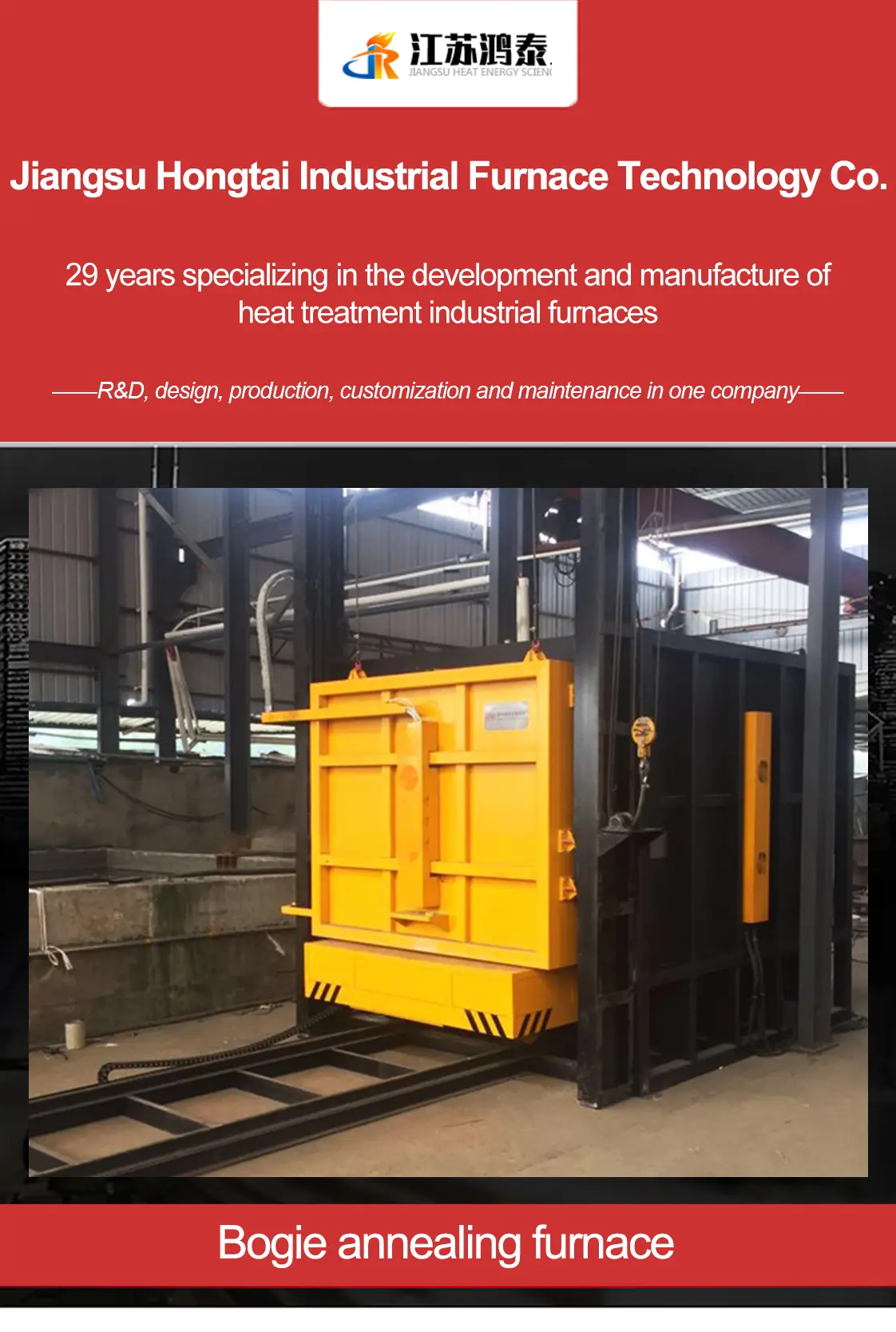
Industrial Value and Application Products
- Large Steel Forgings and Castings: Annealing to relieve stresses and improve machinability for components in power generation, shipbuilding, and heavy machinery.
- Heavy Plates and Coils: Annealing for improved formability in construction, automotive, and industrial applications.
- Railway Wheels and Axles: Annealing to enhance toughness and reduce internal stresses.
- Large Welded Structures: Stress relief annealing to improve structural integrity and prevent cracking.
- Turbine Casings and Rotors: Annealing of large components for power plants to ensure long-term operational reliability.
Bogie-type annealing furnace: is the standard energy-saving cycle-type operation furnace, super energy-saving structure, using all-fiber furnace membrane structure, power saving 30%.
The use of combined high alumina ceramic nail group, combined in the anti-sealing bricks, white sealing cart and furnace door, integrated rail, do not want to be very basic class, placed on a level ground and can be used!
Application:
Used for high chromium, high manganese steel castings, ductile iron, rolls, steel balls, 45 steel, stainless steel and other quenching, annealing, aging, and a variety of mechanical parts for heat treatment.
Technical volume teaching:
(1) Rated power: according to the furnace volume
(2) Rated voltage: 380V
(3) Number of phases: 3p
(4) Frequency: 50HZ
(5) High working temperature: 1200 (
(6) Number of heating zones
(7) Furnace temperature uniformity: 5 ± 10 ° C
(8) Empty furnace warming time: s2
(9) Empty furnace loss: s15
(10) Effective working area size
(11) Temperature control precision: ≤ 2 ℃
(12) Temperature control mode: PID control
Structure Introduction:
(1) The hitch furnace body and a hitch can be weighed and moved to form
(2) Furnace shell and cart are welded with steel plate and steel section
(3) The heating element adopts the high resistance alloy 0Cr27AL7Mo2 resistance band produced by Shougang, which is arranged in the furnace door, furnace side, furnace back wall and bogie.
(4) The furnace lining is made of high alumina fiber cotton, which has strong high temperature resistance and good heat preservation, and cannot be replaced by general fiber cotton. Load-bearing part of the heavy refractory brick masonry to enhance the structural strength of the furnace lining, in order to ensure that the bottom of the Hopper temperature heat transfer is not very high, the cart insulation layer of aluminum silicate refractory fiber, diatomaceous earth thermal insulation bricks composite structure, in order to improve the thermal insulation performance of the furnace body.
Main Technical Characteristics
This electric furnace mainly consists of the main parts such as furnace body (including the door), furnace lining, door lifting and lowering, furnace car, furnace car drive mechanism, electric heating device, temperature control and recording system.
